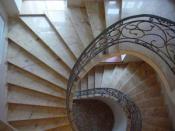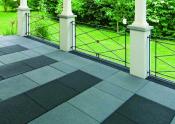Search
Login
Insulated roof - a warm house. How to do roof insulation with your own hands? If it is meant to warm the attic, it is necessary to waterproof the roof - this will protect it from condensation from the inside.
In order for the house to be not only warm, but also to live comfortably and at the same time, to save money on heating, it is necessary to organize warming and waterproofing of the basement, walls, attic, roof. And for this, you need to think about ways of insulation and waterproofing for each specific section of your home, choose the right materials for this. And in our article, we will talk about how and with what, with quality and with our own hands, to insulate and waterproof the roof of a private house.
Content
- Roof insulation: what is it for?
- Roof insulation: types of materials and their features video
- Roof and roof waterproofing: how, what and why
- DIY warm roof video video
Roof insulation: what is it for?
A good house roof is not just a beautiful appearance of any house. A gable roof, a gable roof, a tent roof or a flat roof is also a 100% functioning of the house, regardless of weather, season or wind. Thanks to a properly designed and insulated roof, the house will always be dry, warm, there will be additional areas for the construction of the room or additional space for storing absolutely any things. And the building itself will stand much longer, because the correct roof will not allow the walls of any house to become covered with mold and fungus or to rot out the internal ceilings and walls of a wooden house.
Naturally, a properly insulated roof is also a cost saving: after all, up to 40% of all the heat of energy a house loses through the roof, in case of improper insulation or its absence.
That’s why we’ll talk about how to make the roof of our house, and with it the attic space .. from this

in such:

- warm
- dry
- durable
- economical in heating,
- very comfortable, - all with the help of correctly selected materials!
Roof insulation: types of materials and their features
So how to insulate the roof of the house? What types of insulation materials exist, it is applicable to the insulation of the roof?
And all the same as for warming any frame house. True, everything is not as simple as it might seem, as in the case of insulation of the walls of a house with a roof, the correct calculation and choice are needed.
You can insulate the roof and attic:
- expanded polystyrene / polyurethane and its derivatives in the form of foam concrete,
- polyurethane foam,
- bulk materials (slag, expanded clay),
- mineral wool or basalt insulation.
- Ecowool
Let us consider in more detail each type of insulation and options for how to properly insulate the roof of the house: its slopes and the attic itself.
- only the attic floor (attic floor): we get a cold attic, but a warm house.
- Bulk materials (expanded clay, slag): a plastic film or waterproofing is lined on the floor surface of the attic, a crate is installed that acts as a beacon and, at the same time, a crate for the future floor of the attic based on plywood. In other words, we perform a dry screed. This type of insulation is quick enough, not expensive, although somewhat moral outdated in relation to modern private construction of houses.

- Expanded polystyrene or polyurethane: due to its water and vapor impermeability, this type of insulation does not require additional vapor barrier in case of attic floor insulation. But, it requires floor battens for subsequent flooring or screeding.
- Polyurethane foam: waterproofing is not required, but, without special equipment and protective equipment, working with this type of insulation is simply impossible. So, the cost of the work will be impressive.
- Mineral wool or basalt insulation: the most common and optimal way to insulate attic floors, requiring floor battens and waterproofing.
- Ecowool: you need good waterproofing and vapor barrier, as well as, ideally, special equipment.

- only the roof slopes, without attic insulation of the attic floor: we get a warm enough attic and a warm house.
- Mineral wool or basalt insulation: often used for insulation of roof slopes, both inside and outside, but not very practical with respect to insulation of roof slopes, especially when saving on insulation and hydro-vapor insulation of the roof itself, materials. Their impracticality lies in the fact that the thickness of the required insulation layer can reach up to 25 cm. Of thickness (in 2 layers, staggered between the rafters to avoid the formation of cold bridges), but this is often impossible, because the rafter itself was 20 cm thick, and there should also be an air gap. And mineral wool laid out in one layer is a half-insulated roof for a half-insulated house. And in case of getting wet (and this is, nevertheless, a roof) mineral wool loses its heat-insulating properties. That is why mineral wool is used as a heater from the inside and only by trusted manufacturers.

- Expanded polystyrene or polyurethane: insulation can be made both inside and out, unlike mineral wool, the layer of this material is much smaller, and the expanded polystyrene material is moisture resistant.

- Polyurethane foam: this is an option on how to insulate the roof from the inside and only from the inside. Because it requires special equipment. The plus is that with such a heater, waterproofing is not needed, because polyurethane foam is moisture resistant: does not absorb and does not pass it.

- both the roof slopes and the attic floor: we get either a very warm attic, or, after further finishing the walls and floor, the attic: a completely residential and warm room, and such a warm house.
In this case, you can take on board the already proposed options for roof insulation and the use of each specific type of insulation to your taste and budget.
Roof and roof waterproofing: how, what and why

Does it all depend on the insulation in the matter of roof insulation? How to insulate the roof correctly? Naturally, without waterproofing, this is the roof the first protection of the house from rain and melting snow, when warming the roof, you can not do to avoid leaks. But vapor barrier is an important thing: it will help to keep the insulation and rafters in working condition.
Let's take a closer look:
- waterproofingprovides a special roll of film, which is overlapped (up to 15 cm), glued with special tape. Installation is carried out before installing the insulation in case of insulation from the inside and after insulation, if we insulate the roof from the outside. There is also another roof waterproofing materials for which liquid cement-polymer mastics. But, this type of waterproofing is more often used in mass typical construction on flat roofs.

- vapor barrier it is represented by a vapor-permeable (diffuse) membrane, a special rolled vapor-permeable film made using the spunbond technology, which allows condensate not to accumulate in the insulation layer.

The roof waterproofing device can be well seen in this video.
DIY warm roof
How to insulate the roof with your own hands, see here





